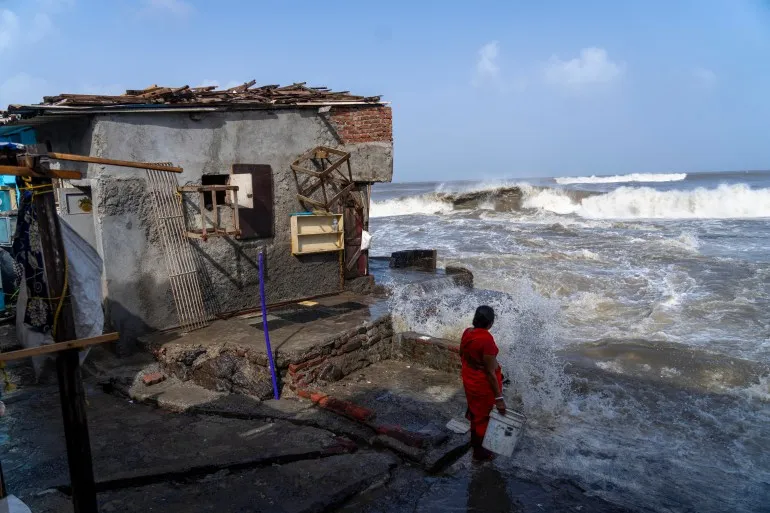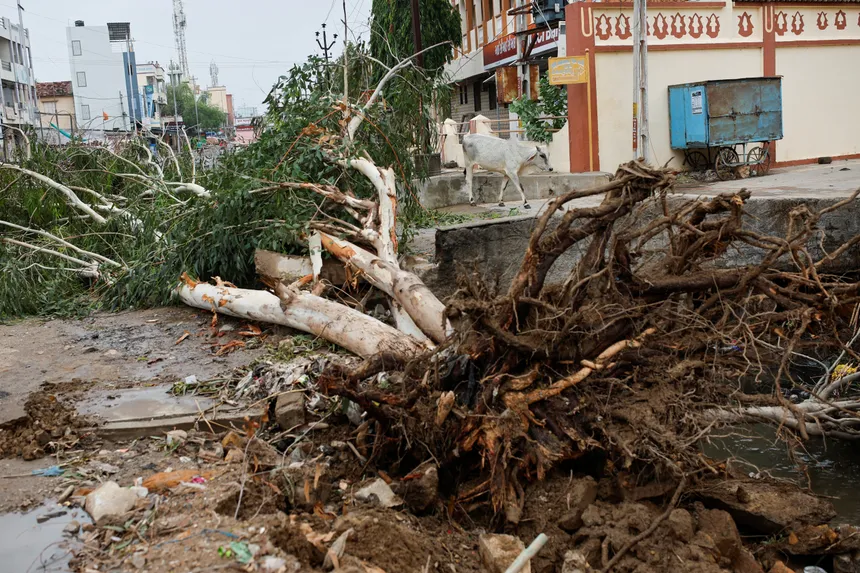In the days leading up to the expected landfall of Cyclone Biparjoy, more than 100,000 people in India and Pakistan were evacuated from coastal and low-lying areas to shelter. The storm, whose name translates to “disaster” in Bengali, is said to be a “very severe cyclonic storm” making its way across the Arabian Sea towards a 325km stretch of coast between Mandvi in India’s Gujarat state and Karachi in Pakistan. According to government weather monitors, the powerful winds, storm surges, and lashing rains were expected to hit the area on Thursday evening.
“Over 47,000 people have been evacuated from coastal and low-lying areas to shelter,” said C C Patel, an official in charge of relief operations in Gujarat. Pakistan’s climate change minister, Sherry Rehman, announced that 62,000 people had been evacuated from the country’s south-eastern coast, with 75 relief camps set up at schools and colleges. Fishers were warned to stay off the water, and small aircraft were grounded, while flooding was possible in the megacity of Karachi, home to about 20 million people.
As the storm approached, India’s Meteorological Department predicted it would hit near the Indian port of Jakhau late on Thursday, warning of the “total destruction” of traditional mud and straw thatched homes. At sea, winds were already gusting at speeds up to 180km/h, and gales were hitting the usually bustling Jakhau port, where more than 30 large fishing boats had been dragged up on to the shore.

Wind speeds were predicted to reach 125-135 km/h, with gusts of up to 150 km/h, by the time it makes landfall, India’s meteorologists warned of the potential for “widespread damage” including the destruction of crops, “bending or uprooting of power and communication poles” and disruption of railways and roads.
In Pakistan, the Meteorological Department forecast gusts of up to 140km/h in the south-eastern province of Sindh, accompanied by a storm surge reaching 3.5 metres. As evacuees gathered at temporary shelters, locals shared their concerns for the future. Wilayat Bibi, an 80-year-old woman from the Badin district, worried about her fishing family’s fate even after the storm passes. “Our concern is when the cyclone is over, how will we feed our children?” she asked. “If our boats are gone, if our huts are also gone – we will be languishing with no resources.”
Cyclones, also known as tropical cyclones or hurricanes, are a regular and deadly menace on the coast of the northern Indian Ocean, affecting tens of millions of people. Human-caused climate change has increased the occurrence of the most intense and destructive tropical cyclones, due to warming oceans providing more energy, producing stronger storms. The consequences of these extreme weather events, including extreme rainfall, storm surges, and higher sea levels, are devastating for communities, especially those living in low-lying areas or relying heavily on fishing and agriculture.
As Cyclone Biparjoy makes its mark on the region, its impact will be felt for weeks to come, impacting the lives of hundreds of thousands of people. The storm’s aftermath will leave many without homes, livelihoods, or resources, and the road to recovery will be long and arduous.

